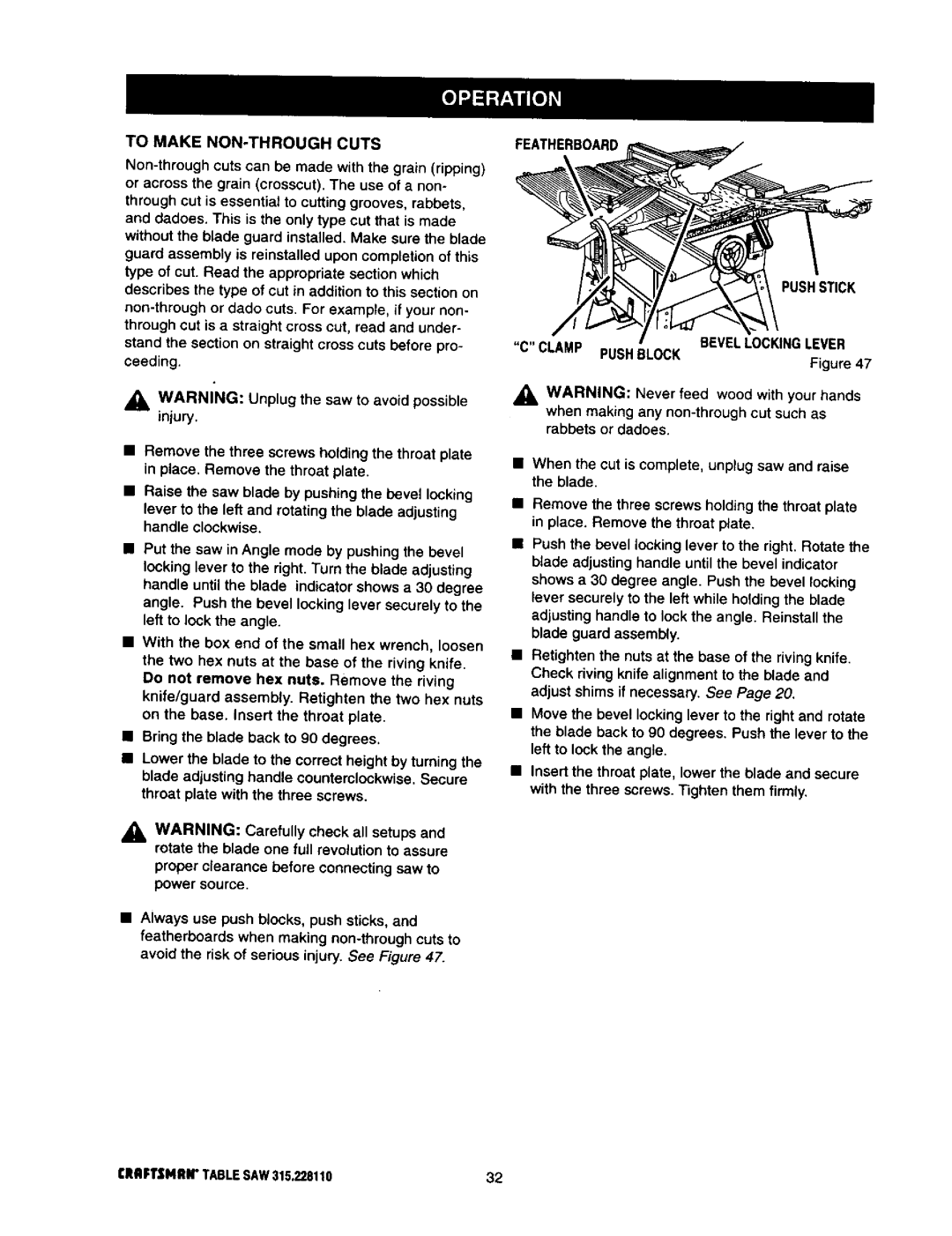
TO MAKE NON-THROUGH CUTS
through cut is essential to cutting grooves, rabbets, and dadoes. This is the only type cut that is made without the blade guard installed. Make sure the blade guard assembly is reinstalled upon completion of this type of cut. Read the appropriate section which describes the type of cut in addition to this section on
_, INARNING: Unplug the saw to avoid possible mlury.
•Remove the three screws holding the throat plate inplace, Remove the throat plate.
•Raise the saw blade by pushing the bevel locking
lever to the left and rotatingthe blade adjusting handle clockwise.
•Put the saw in Angle mode by pushing the bevel locking lever to the right. Turn the blade adjusting handle until the blade indicator shows a 30 degree angle. Push the bevel locking lever securely to the left to lock the angle.
•With the box end of the small hex wrench, loosen the two hex nuts at the base of the riving knife. Do not remove hex nuts. Remove the riving knife/guard assembly. Retighten the two hex nuts on the base. Insert the throat plate.
•Bring the blade back to 90 degrees.
•Lower the blade to the correct height by turning the blade adjusting handle counterclockwise. Secure throat plate with the three screws.
_t, WARNING: Carefully check all setups and rotate the blade one full revolution to assure
proper clearance before connecting saw to power source.
•Always use push blocks, push sticks, and featherbeards when making
PUSH STICK
"C" CLAMP PUSHBLOCK BEVELLOCKINGLEVER Figure 47
_. WARNING: Never feed wood with your hands
i
when making any
•When the cut is complete, unplug saw and raise the blade.
•Remove the three screws holding the throat plate in place. Remove the throat plate.
•Push the bevel locking lever to the right. Rotate the blade adjusting handle until the bevel indicator shows a 30 degree angle. Push the bevel locking lever securely to the left while holding the blade adjusting handle to lock the angle. Reinstall the blade guard assembly.
•Retighten the nuts at the base of the riving knife. Check riving knife alignment to the blade and adjust shims if necessary. See Page 20.
•Move the bevel locking lever to the right and rotate the blade back to 90 degrees. Push the lever to the left to lock the angle.
•Insert the throat plate, lower the blade and secure with the three screws. Tighten them firmly.
CRRFTSMlUI" TABLE SAW 315.228110 | 32 |
